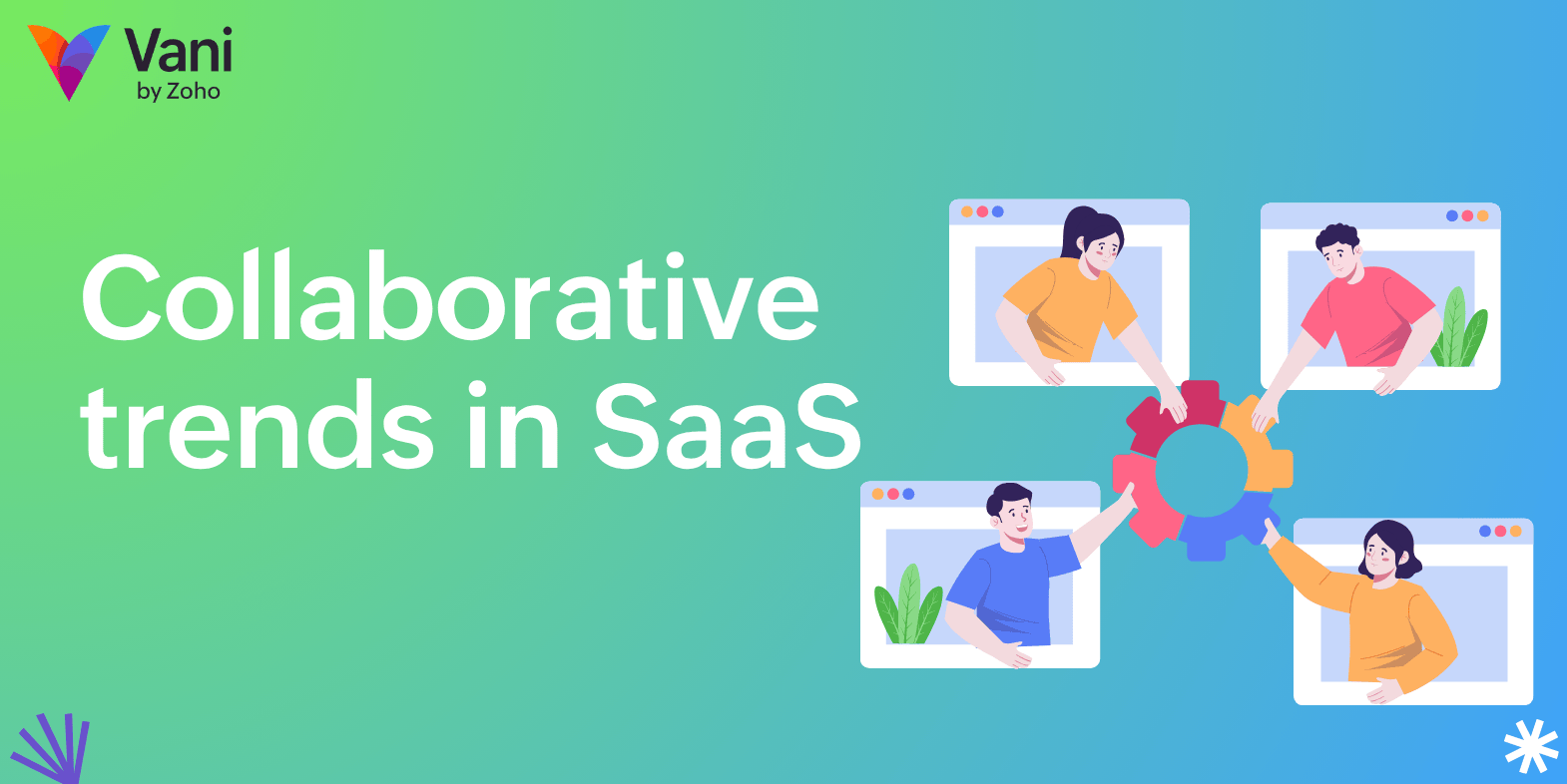- HOME
- Technology & Trends
- Collaborative trends in SaaS that are shaping the modern workplace
Collaborative trends in SaaS that are shaping the modern workplace
- Last Updated : September 30, 2025
- 24 Views
- 5 Min Read

Before cloud-based collaboration tools became mainstream, teams relied heavily on meetings, emails, and a patchwork of disconnected platforms. Project updates were shared through long chains of messages. Feedback often came too late in the process. And documents had to be passed back and forth, leading to version confusion and delays. Collaboration was reactive, time-bound, and often inefficient.
As SaaS companies grew more complex and distributed, this model began to break down. The pressure to ship faster, stay aligned, and work across departments exposed the limits of traditional collaboration methods. It became clear that teams needed more than communication—they needed systems that supported collaborative execution.
In this blog post, let's take a look at the current trends in SaaS collaboration that are shaping the modern workplace.
The shift to embedded collaboration inside workflows
One of the most important shifts in SaaS collaboration has been the move from external coordination to embedded collaboration. Instead of talking about the work in one place and doing it in another, teams now operate in shared environments where discussions, decisions, and deliverables live together.
Whether it’s product planning, content writing, or campaign tracking, the work itself becomes the space where collaboration happens. Team members leave comments, tag colleagues, assign tasks, and respond directly inside documents, timelines, and roadmaps. This shift has reduced handoffs, improved transparency, and made it easier to keep momentum without waiting on others to be available in real time.
Modern trends in SaaS collaboration
As the landscape continues to evolve, several key trends are emerging that reflect how teams prefer to work today and what actually helps them get things done.
Async-first collaboration is becoming the standard
SaaS teams are increasingly embracing asynchronous collaboration. Instead of relying on constant check-ins or back-to-back video calls, they’re choosing formats that allow everyone to contribute on their own time. Updates are shared as written briefs, recorded walkthroughs, or annotated comments that can be reviewed later.
This approach supports distributed teams and enables deeper, more focused work. It also gives team members space to think critically before responding, leading to higher-quality feedback. Importantly, it reduces meeting fatigue and creates a more inclusive environment for contributors who may not thrive in live conversations.
Visual workspaces are replacing static documents
Another major trend is the rise of visual collaboration spaces. These environments offer shared canvases where teams can map out ideas, workflows, and strategies using shapes, sticky notes, timelines, and diagrams. Instead of static slides or endless text, teams now plan visually, together.
Visual workspaces offer clarity that traditional documents often lack. They help uncover blind spots, align perspectives quickly, and encourage creative exploration. Everyone can see the bigger picture, literally, and contribute to shaping it, even asynchronously. This kind of visual collaboration fosters alignment and breaks down communication barriers across functions.
Meetings are moving into collaborative environments
Live meetings haven’t disappeared, but they’ve become more focused and efficient. Increasingly, teams are holding video calls directly inside the collaborative tools they use every day. During a strategy meeting, for example, the team might discuss ideas while updating a shared roadmap or adjusting a visual plan in real time.
This integration of communication and execution eliminates the gap between what’s said and what’s done. Action items, decisions, and context are captured on the spot, reducing the need for post-meeting follow-ups or redundant tools. It makes meetings more meaningful and instantly actionable.
Real-time co-editing is improving team productivity
The ability to co-edit documents, spreadsheets, and plans in real time has become a fundamental expectation on SaaS teams. What once required email back and forth and manual revisions now happens seamlessly. Team members can jump into the same file, leave contextual comments, suggest edits, or resolve issues on the fly.
This level of interactivity speeds up decision-making and fosters a stronger sense of shared ownership. It also reduces friction, so there's no more guessing which version is final or waiting for one person to send updates. Everyone works from the same source of truth.
Role-based access is providing structure and control
As collaboration becomes more fluid, it’s equally important to maintain control and accountability. That’s why role-based permissions and version tracking have become essential. SaaS teams now set clear boundaries for who can view, edit, comment, or manage various elements of a project.
This not only protects sensitive information but also ensures that collaboration doesn’t descend into chaos. Everyone knows their role, and their contributions are traceable. This builds confidence across teams, especially when working on fast-paced projects involving multiple stakeholders.
Tool integrations are enabling connected workflows
SaaS teams rarely rely on a single tool. Instead, they work across ecosystems, connecting communication, planning, development, and analytics platforms. Today’s collaboration tools are expected to integrate smoothly with other software, automating routine tasks and syncing data across systems.
For example, a completed task can trigger an update on a planning board, notify the right people, and log time automatically. These integrations remove the need for manual follow-ups and reduce the chance of things slipping through the cracks. They create a connected workflow that saves time and improves visibility.
AI is supporting routine collaboration tasks
Artificial intelligence is starting to play a supportive but impactful role in how teams collaborate. It’s helping summarize meeting notes, draft initial versions of documents, suggest next steps, or organize scattered inputs into structured formats.
Instead of replacing human collaboration, AI is reducing the busywork that slows it down. It allows team members to focus on high-value conversations and creative problem-solving, while automation handles the repetitive details in the background.
Multi-format communication is becoming more common
Finally, teams are moving beyond just written text. They’re blending voice notes, video explanations, annotated screenshots, and quick reactions into their day-to-day collaboration. This flexibility lets people express ideas in the format that feels most natural to them, whether they’re describing a bug, pitching a design, or sharing quick feedback.
It also brings a more human touch to remote work. Seeing a face, hearing a voice, or watching a screen demo often communicates more than a paragraph ever could. This diversity of communication styles is helping teams stay connected, clear, and engaged without needing to be online at the same time.
Conclusion
As the pace of work accelerates and teams grow more distributed, collaboration needs to be built into the very fabric of how work happens. The trends we’re seeing today—asynchronous workflows, visual planning, in-context meetings, AI assistance, and flexible communication—aren’t just improvements; they’re a response to how modern teams actually work.

